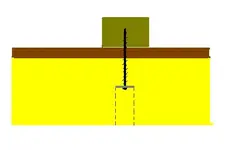Unless your ceiling is already absorbent, you need to eliminate early reflections between speakers and ceiling - you do this by putting up a "cloud" whose front-to-back center is halfway between you and your speakers, and center it left-to-right. Typically this needs to be at least 4 x 6 feet to catch any possible reflections. This is necessary until your ceiling is at least 10-12 feet higher than your head (while mixing); beyond that distance, reflections will be late enough NOT to smear the stereo image. At that point, diffusion could also work.
You already have your corners treated, although ceiling/wall corners wouldn't hurt. However, it's nearly impossible to get specific without pix and drawings of the exact space - see this thread for an example -
http://www.homerecording.com/bbs/showthread.php?s=&threadid=114785
BTW, doubling your panels isn't cost effective if you're already standing them away from the surface - you'll get more benefit by covering a greater area. What controls the lower frequency range is the distance from the wall to the OUTER surface of the absorber - peak absorption occurs at the 1/4 wavelength point.
You can figure out the peak absorption distance from facing of the absorbent to wall with the formula
D=3390/F, where
D=distance in inches
F=frequency
This is the 1/4 wavelength frequency for those particular conditions, above that frequency you'll still get absorption. Below it, absorption will fall off sinusoidally, reaching roughly 70% at 0.75 F. In plain english, if you set your face-to-wall distance to peak at 400 hZ (8,475") then you'll get 70% as much absorption at 300 hZ, which is still pretty usable. All this is at 90 degree incidence (straight on, not angled)
I'm sitting here wasting beautiful weather with a crapload of outside "honey-do's" waiting, so that'll have to do for now - I'll check back tonight to se how much chaos I've caused, and see if I can straighten it out... Steve



